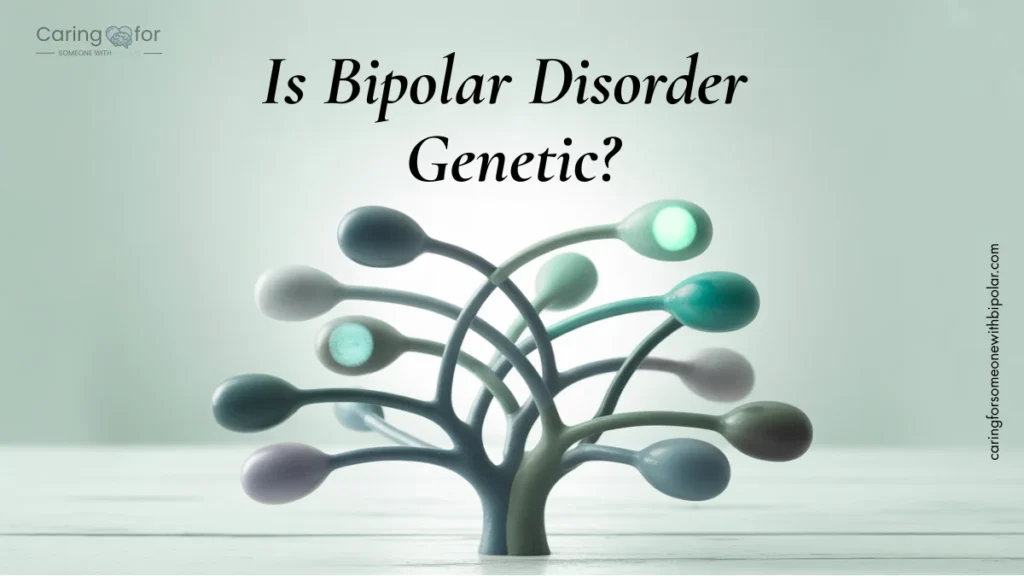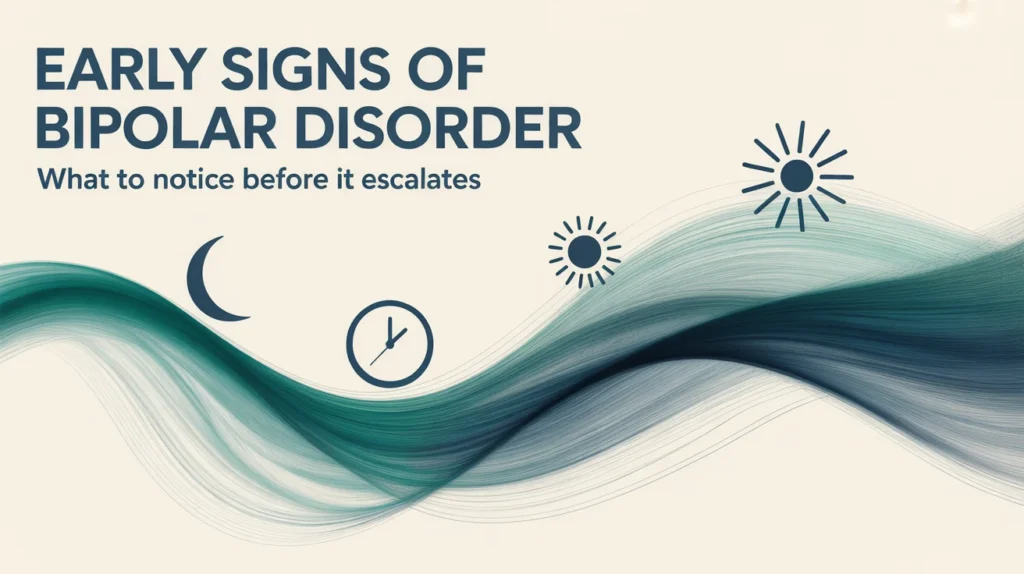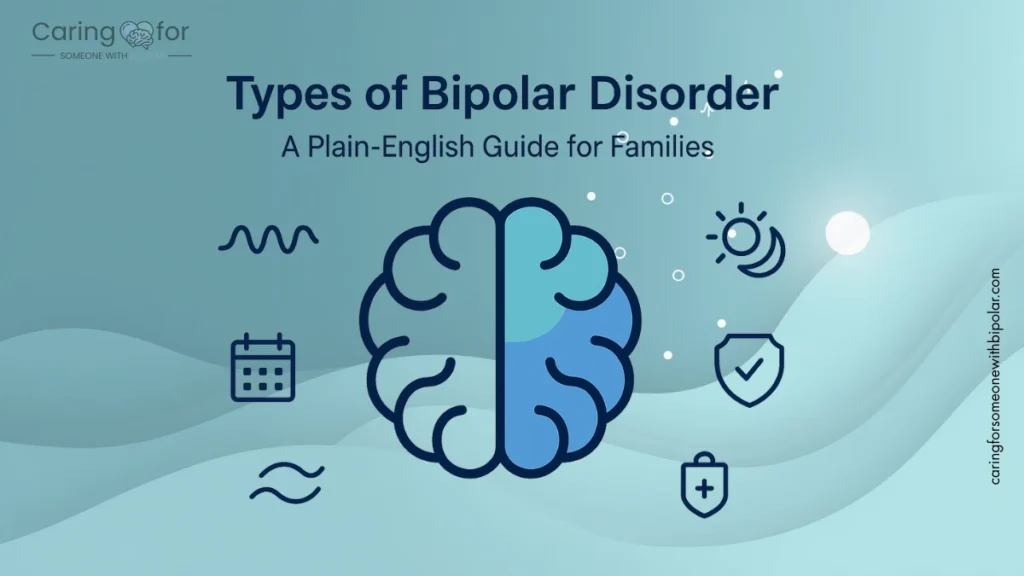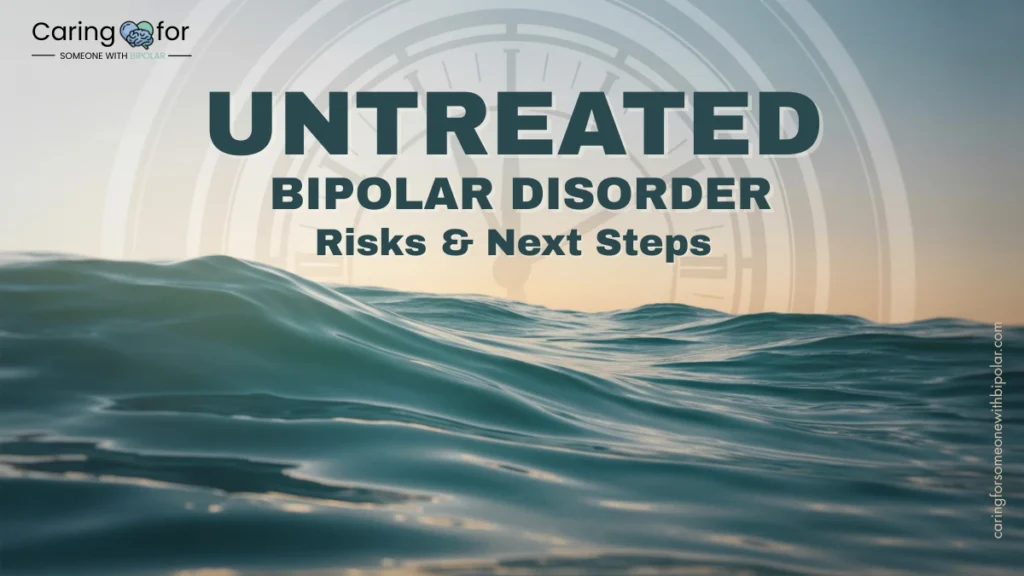Is bipolar disorder genetic, or something that just happens to people randomly?
If you’ve watched a loved one struggle with intense mood swings, or if you’re managing bipolar symptoms yourself, it’s natural to wonder: Could this run in my family? Did I inherit it from a parent? Can I pass it on to my children?
Bipolar disorder does show patterns of inheritance. But it’s not as simple as inheriting eye color or height. It’s the result of a complex interaction between genes, brain chemistry, and environmental stressors. Understanding this connection can help reduce fear, ease guilt, and encourage early support.
Let’s break down what current science knows about bipolar disorder and genetics, without the jargon.
Author: Elena – Caregiver Advocate
Medically reviewed by: Dr. L. Saadi, MD (Psychiatry) – Last reviewed: September 8, 2025
Educational information only; not medical advice.
Crisis resources (keep ad-free)
U.S.: 988 · U.K.: Samaritans 116 123 · International: IASP crisis center finder
Is Bipolar Disorder Genetic or Hereditary?
The short answer: Yes, bipolar disorder can be inherited, but it’s not guaranteed to be passed down.
If someone has a first-degree relative (like a parent or sibling) with bipolar disorder, their risk of developing it is higher than the general population. Studies estimate that:
- If one parent has bipolar disorder, the risk for a child is about 15–30%.
- If both parents have bipolar, the risk can rise to 50–75%.
- Even if a grandparent or aunt/uncle is affected, the odds are still higher than average.
But genetics isn’t destiny. Many people with a family history never develop the disorder. And some people with no family history still do. That’s because genes are only one piece of the puzzle.
Want to dive deeper? Next, we’ll look at how bipolar can be inherited across generations.
How Is Bipolar Disorder Passed Down Through Families?
Bipolar disorder doesn’t follow a simple genetic pattern like single-gene conditions (e.g. cystic fibrosis). Instead, it’s classified as a polygenic disorder, meaning multiple genes interact, and each contributes a small risk.
Key Points on Inheritance:
- The National Institute of Mental Health (NIMH) confirms that bipolar disorder is more common in people with a family history of mood disorders.
- A 2009 study in Archives of General Psychiatry found that children of parents with bipolar disorder had a 14-fold increased risk of developing the illness.
- However, environmental factors, such as trauma, chronic stress, or substance use, can “activate” a genetic predisposition.
Scientists have identified several genetic markers (e.g. CACNA1C, ANK3 genes) linked to bipolar disorder, but none are considered deterministic. Even identical twins don’t always both develop the disorder, showing that non-genetic factors matter too.
So while bipolar disorder is genetically influenced, it is not purely genetic.
What’s the Difference Between Genetic, Hereditary, and Environmental?
- Genetic means influenced by DNA, your biological code.
- Hereditary means passed from parents to children.
- Environmental refers to life experiences and surroundings that impact mental health.
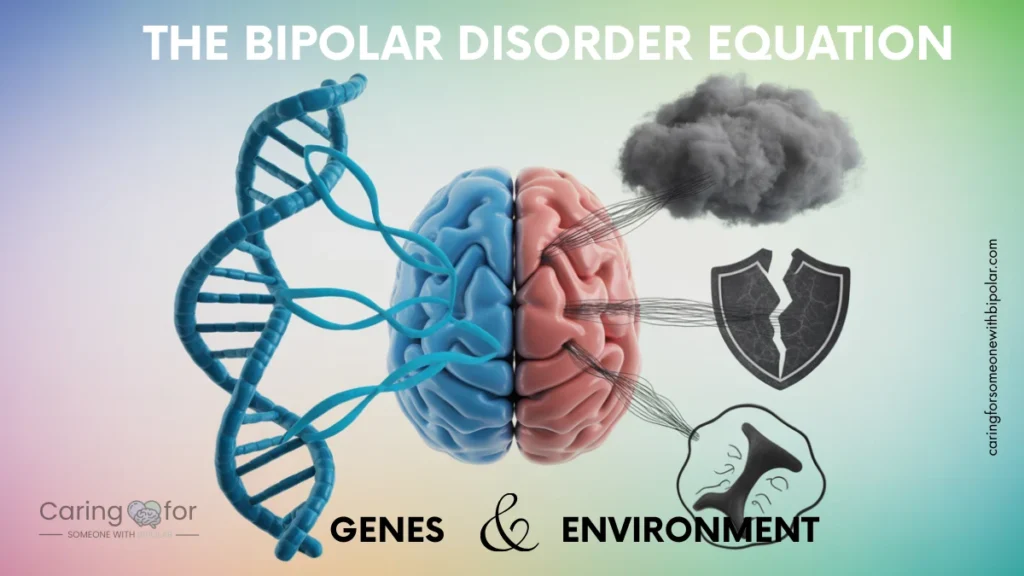
Bipolar disorder sits at the intersection of all three:
- It may be genetically primed (through inherited susceptibility),
- Triggered by environment (e.g. early trauma, sleep disruption),
- And influenced by biology (brain chemistry, hormone regulation).
This is why two siblings, raised in the same household, might have very different mental health outcomes, even with similar genetics.
Can You Inherit Bipolar Disorder from One Parent Only?
Yes, you can. If one biological parent has bipolar disorder, the child’s risk of developing the condition increases significantly – though it’s still not guaranteed.
Risk estimates:
According to a review in the journal “Bipolar Disorders” (2011), these percentages suggest strong familial influence, but they also highlight that genetics alone do not determine outcome.
- One parent with bipolar: ~15–30% lifetime risk for the child.
- Both parents with bipolar: risk increases to 50–75%.
- No diagnosed parent: ~1–3% risk in the general population.
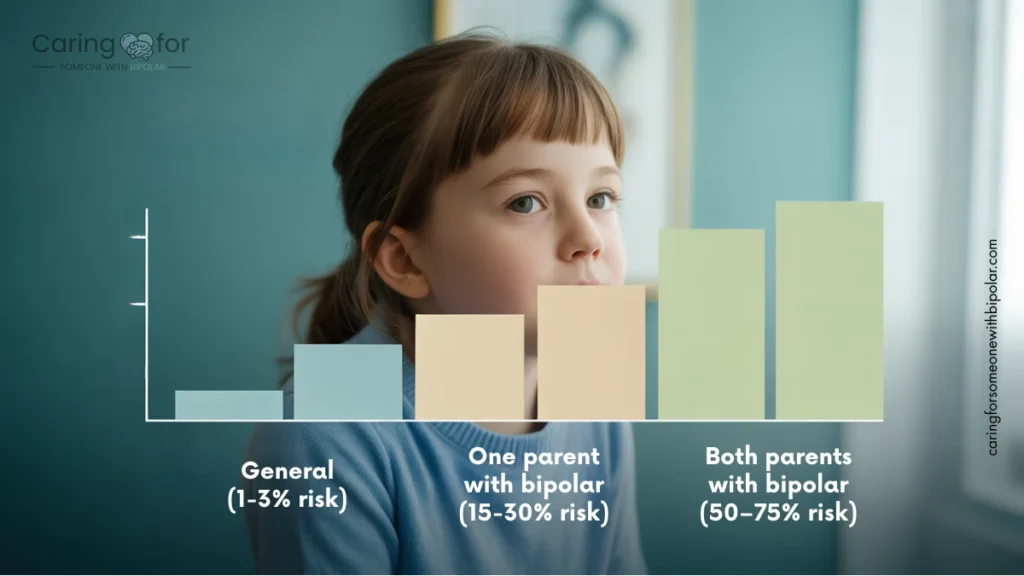
It’s important to note that a family history may also involve unrecognized or undiagnosed bipolar traits, like mood instability, impulsivity, or substance abuse, without formal diagnosis.
Is There a Genetic Test for Bipolar Disorder?
As of now, no single genetic test can diagnose bipolar disorder.
Why?
- Bipolar disorder involves multiple genetic and neurobiological factors.
- It is not linked to one specific gene, unlike conditions like Huntington’s disease.
- Many of the associated genes are also involved in other psychiatric disorders like schizophrenia and major depression.
However, some genetic testing panels now include mental health risk markers (e.g. via companies like Genomind or 23andMe). These may provide indications of predisposition, but they are not diagnostic.
Most psychiatrists still rely on clinical interviews, medical history, and behavioral patterns, not DNA, to make a diagnosis.
Can You Prevent Bipolar Disorder If It Runs in Your Family?
While you can’t change your genes, you can reduce risk through preventive strategies and early intervention.
Recommendations:
- Monitor early symptoms: especially during teenage years (when bipolar often begins).
- Protect sleep patterns: sleep disruption is a major trigger.
- Limit stress exposure: high-stress environments increase vulnerability.
- Seek support early: family counseling, psychoeducation, and even preventive therapy for at-risk youth.
Studies show that early treatment and education in high-risk families can delay or prevent the full onset of the disorder (Mental Health America).
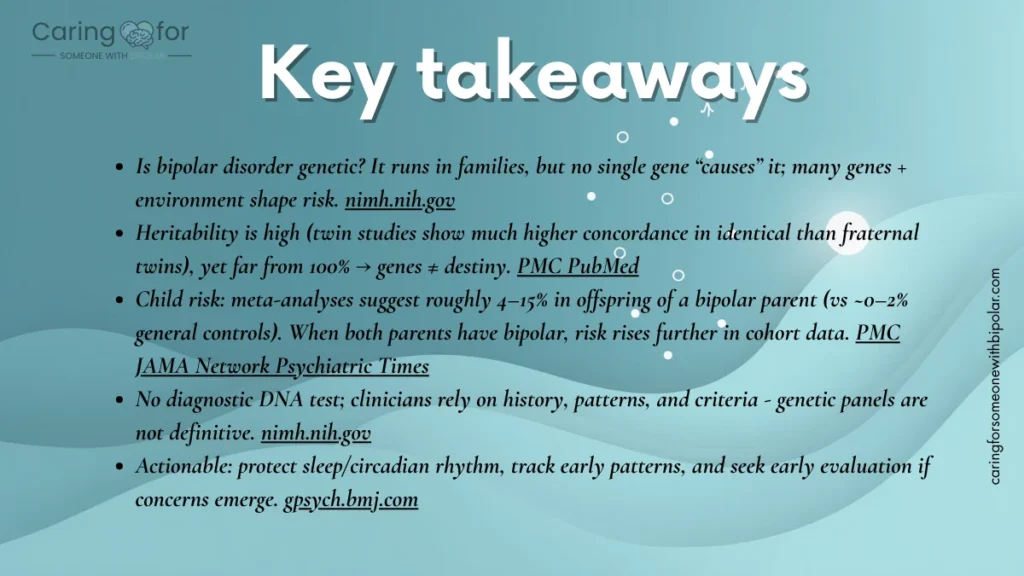
Conclusion – Genes Aren’t Destiny
Understanding the genetics of bipolar disorder can feel daunting, but it also offers clarity. If bipolar runs in your family, it’s not a guarantee that you’ll develop it. It’s an invitation to be proactive, informed, and compassionate with yourself and your loved ones.
Bipolar disorder is treatable, manageable, and not a life sentence. With the right tools, support systems, and awareness, those at risk can still thrive.

Related guides
- Early Signs of Bipolar Disorder (What to Notice Early)
- What Does Untreated Bipolar Really Look Like?
- How to Support Someone With Bipolar Disorder
Get our free download:
“Bipolar & Genetics Explained” Toolkit (coming soon)
Includes risk charts, symptom checklists, and early intervention strategies for at-risk families.

